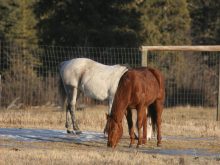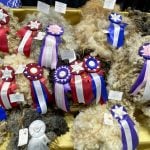Nothing frustrates me more than when big bulls are unnecessarily injured. This happens a lot when bulls are introduced or reintroduced to one another. It also happens when bulls are transported together in trailers.
Bull pens must be big enough to allow bulls to escape from one another.
Every time we move bulls, whether for foot trimming, semen testing or pen cleaning, fighting can start. If we are diligent about reintroductions or mixing bulls, we may be able to reduce injuries.
The time for new introductions is when we are disrupting the whole pen. This allows the newcomers to blend into the group. Lots of space to avoid one another and distractions are also necessary. Distractions can include big rocks, brushes or oilers.
Read Also

Beef cattle more prone to trace mineral deficiencies
The trace mineral status of our cows and calves is a significant challenge for western Canadian producers and veterinarians.
Ideally, bulls should have a field in the off-season to get lots of exercise and this is a good time to introduce new bulls to give the animals time to grow familiar with each other.
A tip I’ve recently seen is to spray vinegar, using a spray bottle or applicator gun, on bulls’ backs when introducing them (usually a couple ounces). The principle behind this is to make all the bulls smell the same.
This may also help purebred producers when they need to put bulls from different pens in the same compartment of the trailer. However, it is best to separate bulls when transporting with multi-compartment trailers.
Bulls introduced into breeding groups for the first time will spend a few days sparring and cows may not be bred. I prefer to run different ages of bulls together as the propensity to fight is averted because of big size differences.
Sparring and fighting injuries can take a bull out of commission with damage to feet, legs, broken ribs or other issues.
Some bulls may be poor performers because of scarring peritonitis or non-healing foot or leg injuries.
When bulls are injured, it is important to treat them quickly. Isolating them is best to let them convalesce and receive treatment. Sometimes treatment can be as basic as NSAIDs on prescription from your veterinarian.
Sound feet and legs are a necessity during breeding season so any foot care must be looked after well in advance.
It is important to find the proper breeding ratio. Too little bull power results in missed breeding opportunities, yet too many bulls can cause fighting problems.
Producers should purchase bulls from reputable purebred breeders (virgin bulls) to eliminate risks of venereal diseases and make sure they have satisfactory semen evaluations.
Many producers insure their bulls for the first season but it’s still best practice to be diligent to avoid injuries. Early recognition of problems and proper treatment can yield favourable outcomes.
Conditions like lumpy jaw, wooden tongue and abscesses can be treated with great success.
Also, many cut penises or sheaths can be treated with minor medical interventions.
Many lameness instances are caused by things like sole abscesses, cracks, corns and single corns in old bulls. This is where preventive hoof care can help.
Foot rot must be treated as quickly as possible. The fever that develops, not the antibiotic treatment, will affect sperm quality.
If producers notice serious, non-treatable injuries, they must ship these animals as quickly as possible.
Have a great breeding season everyone and let’s keep bull health at the top of our minds this year. They are a very valuable asset to the herd and worth looking after.
Roy Lewis works as a veterinarian in Alberta.















